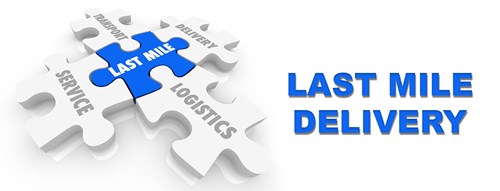Technology | Around the Industry
December 14, 2021

Last Mile Delivery – The Last Stop in A Product’s Journey
By John Bossong, PacLease National Account Sales Executive - Southeast
In the race to finish the last mile, the winners will be the most efficient and those who take advantage of emerging technologies. It is the last stop in a product’s journey through the supply chain, but also the most expensive and most time-consuming.
With the rise of e-commerce retail sales over the last several years, the final mile of a product’s journey is becoming the most important part. Maximizing this last mile of delivery is now creating a competitive advantage for organizations who can get it right.
The last mile delivery is typically defined as the movement of product from a centralized hub to the final destination. The destination is most likely a home. If you’ve ordered anything on-line and had it delivered to your home, you’ve been a part of the last mile delivery process.
According to Business Insider, ecommerce sales in the U.S. are estimated at $791 billion, up one-third from 2019. Business Insider also noted that the last mile delivery accounts for 53% of total shipping costs.
Thus the dilemma, how can organizations focus on delivering to end users as fast as possible while being efficient with the most expensive part of the process? Why is the last mile the most expensive mile? Because it creates several touches or stops and the delivery volumes are most often small.
So, like any other process, the more touches and volume, the greater chance for variation (errors), which leads to less efficiency and increased costs.
Customer expectations control the last mile delivery process. It’s now becoming table stakes. The last mile delivery is simply an extension of your brand. It is part of the “experience” you create.
Delivery expectations in the last mile sector have been set by Amazon, which currently fulfills 72% of orders for prime customers within 24 hours according to CCJDigital.com.
Amazon leverages the last mile delivery in three ways according to Jungleworks.
- Better control
- Ease of management
- Collaborations / Partnerships
There are three ways to provide last mile delivery. One, utilize your own trucks. Thus, you can control the brand and the experience. Two, outsource it. There are a multitude of third-party logistics and traditional carriers in the last mile game. Three, collaborate or partner with another company.
All three can work. All three are in use right now. All three have pros and cons. The key is to determine how you will minimize costs and maximize efficiency in the most expensive part of the supply chain.
According to Legacy Supply Chain Services there are several trends that will enhance and improve the last mile delivery experience in the future.
- The gig economy and crowdsourcing
- Technology (tracking)
- Autonomous delivery
- Rapid order fulfillment
- Warehouses in urban areas (if you build it, they will come)
- Hybrid fleet management systems
Going forward, technology will drive the last mile delivery process. The organizations that embrace technology while reducing costs and improving efficiencies concurrently, should finish the last mile strong.
Visit the PacLease blog for more great blogs.
